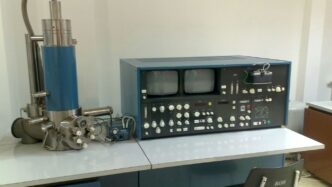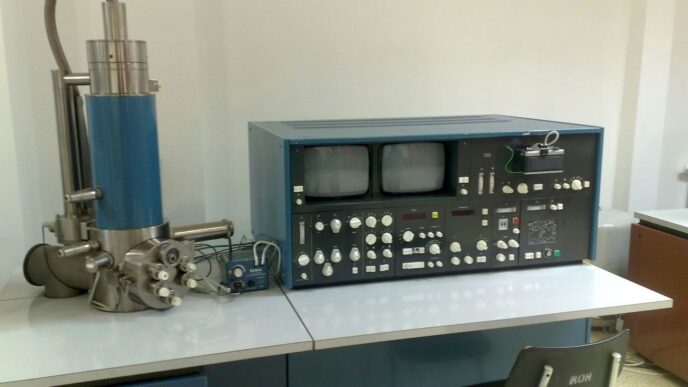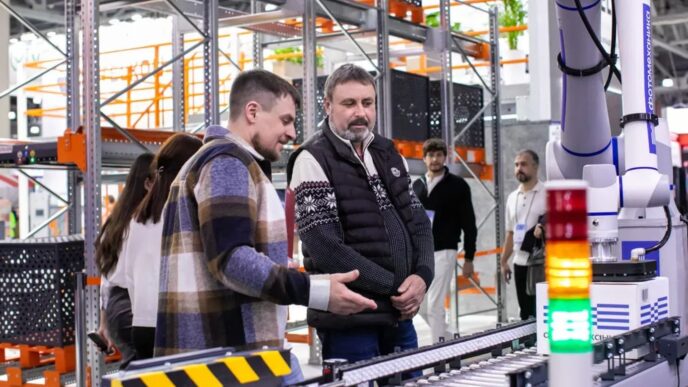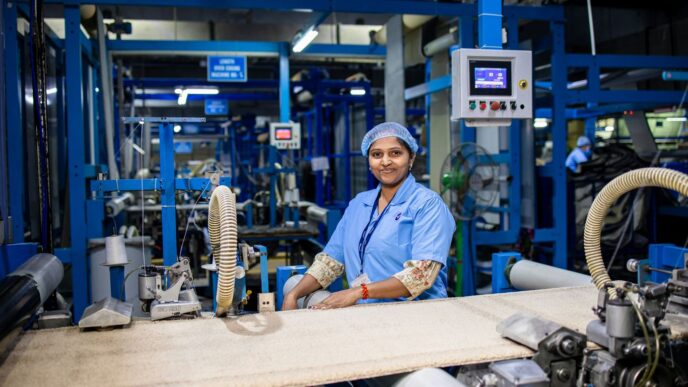Enhanced Precision and Accuracy
When it comes to knee replacement, getting things just right is super important for how well the new knee works and how long it lasts. Traditional methods rely a lot on the surgeon’s hands and eyes, which are great, but let’s be honest, they have their limits. This is where robotic assistance really shines.
Real-Time 3D Imaging for Precise Cuts
Think of it like having a super-detailed GPS for your knee. Before surgery even starts, the robot uses advanced imaging to create a 3D map of your knee joint. This map shows the exact shape of your bones, where the cartilage is worn away, and how your ligaments are positioned. During the operation, the robot uses this map to guide the cutting tools with incredible accuracy. This means the surgeon can make bone cuts that are exactly where they need to be, matching the plan perfectly. It’s not just about making a cut; it’s about making the right cut in the right place, every single time.
Accurate Implant Placement and Alignment
Getting the new knee implant positioned just right is key. The robot helps the surgeon place the implant with a level of precision that’s hard to achieve by hand alone. It ensures the implant is aligned correctly with your leg’s natural axis and that the soft tissues around the knee are balanced properly. This precise alignment and balancing are critical for:
- Reducing stress on the implant over time.
- Allowing for a more natural range of motion.
- Minimizing the chance of the implant loosening or wearing out prematurely.
Minimizing Errors in Unique Anatomy
Everyone’s knee is a little different, right? We all have unique bone shapes, wear patterns, and ligament tightness. What works perfectly for one person might not be ideal for another. Robotic systems are designed to account for these individual differences. By using the detailed 3D model created before surgery, the robot can help the surgeon tailor the procedure to your specific anatomy. This helps avoid common issues that can arise from trying to fit a standard approach onto a non-standard knee, leading to a better fit and function for you.
Personalized Surgical Planning
Before the robot even gets involved, a whole lot of planning goes into your knee replacement. It’s not just a one-size-fits-all deal anymore. Think of it like a custom suit versus something off the rack.
Customized 3-D Surgical Plans
This is where the magic starts. Using scans like CT or MRI, the surgical team creates a detailed 3D model of your knee. This isn’t just a picture; it’s a digital blueprint. They can map out exactly where the bone needs to be cut and where the new implant will sit. This detailed planning helps avoid surprises during the actual surgery. It’s like having a roadmap for every twist and turn.
Optimal Implant Size and Type Selection
Based on that 3D model and your specific anatomy, the system helps pick the best size and type of implant for you. It’s not just about fitting it in; it’s about making sure it works well with your body’s natural structure. This careful selection aims to make the new knee feel more natural and function better.
Tailoring to Individual Anatomy
Everyone’s knee is a little different, right? Bone shape, ligament tension, even past injuries play a role. The robotic system, guided by the pre-operative plan, can account for these unique features. It helps the surgeon make cuts and place the implant in a way that respects your body’s specific layout. This means the surgery is tailored just for you, not just a generic procedure.
Potential for Improved Outcomes
So, what does all this fancy robotic tech actually mean for you, the patient? Well, the big hope is that it leads to better results overall. Think about it: when a robot helps with the surgery, it’s supposed to be super precise. This could mean fewer mistakes, like putting the implant in just the right spot and at the perfect angle.
Reduced Risk of Complications
One of the main goals with robotic assistance is to cut down on those annoying complications that can pop up after surgery. Because the robot can make really accurate cuts and place the implant exactly where the surgeon planned, there’s a chance of things like the implant not lining up right or loosening over time. Studies are starting to show that this precision might lead to fewer issues down the road. It’s not a magic bullet, and complications can still happen, but the idea is to minimize the chances of them occurring.
Less Tissue Damage and Blood Loss
Another perk that’s often talked about is that robotic surgery might be gentler on your body. The robot’s precision can help the surgeon avoid damaging nearby muscles and ligaments as much. This could mean less bleeding during the operation, which is always a good thing. Less trauma to the tissues might also play a role in how quickly you start to feel better after the procedure.
Enhanced Long-Term Implant Success
Ultimately, everyone wants their new knee to last as long as possible, right? The hope is that by getting the implant placed perfectly from the start, it’ll wear better over the years. If the implant is aligned correctly and stable, it’s less likely to cause problems later on. While we don’t have tons of super long-term data yet on robotic knee replacements specifically, the theory is that this improved initial placement could lead to better implant survival rates in the long run. It’s all about setting the stage for a successful outcome that lasts.
Patient Recovery and Experience
When you think about knee replacement surgery, the recovery part is usually a big concern, right? It’s totally understandable. With robotic-assisted surgery, there’s a lot of talk about how it might change things for patients after the operation. The idea is that by being super precise during the surgery, things could be smoother when you’re healing up.
Faster Rehabilitation Potential
One of the main hopes with robotic knee surgery is that it could lead to a quicker start on getting back on your feet. Because the robot helps the surgeon make very exact cuts and place the implant just right, it might mean less irritation to the surrounding tissues. This could translate into less swelling and pain early on, which are often the biggest hurdles when you’re first trying to move your new knee. Think of it like this: if everything is placed perfectly from the start, your body might not have as much work to do to adapt.
Reduced Post-Operative Pain
Many patients report that the pain after robotic-assisted knee replacement is less intense compared to traditional methods. This is likely tied to that enhanced precision we talked about. When the implant fits perfectly and the alignment is spot-on, it can reduce stress on the joint and surrounding nerves. Some studies have shown patients reporting better pain relief in the initial weeks after surgery. Of course, some discomfort is still expected – it’s major surgery after all – but the hope is that the sharp, intense pain might be dialed down a bit.
Quicker Return to Daily Activities
Ultimately, the goal for most people is to get back to their normal lives as soon as possible. This means walking without a limp, going up and down stairs without a struggle, and enjoying hobbies again. With the potential for faster rehabilitation and reduced pain, patients might find they can start doing more, sooner. While it’s not like you’ll be running a marathon the next day, the timeline for returning to everyday tasks, like driving or light household chores, could potentially be shortened. Most people can expect to resume their regular activities within about six to twelve weeks, and the robotic approach aims to make that journey a bit smoother.
Limitations and Considerations
While robotic knee replacement surgery sounds pretty futuristic and amazing, it’s not all smooth sailing. There are definitely some hurdles and things to keep in mind before jumping in. It’s not a magic bullet, and like anything new, it’s still got its growing pains.
Limited Long-Term Evidence
One of the biggest things is that this technology is still pretty new. We don’t have decades of data showing how these robotic-assisted knees hold up over the really long haul compared to traditional methods. Most of the studies we have are shorter-term, and while they look promising, we just don’t know for sure how they’ll perform 20 or 30 years down the line. It’s like buying the first model of a new car – it might be cool, but you’re not sure about all the kinks it might have.
Technical Issues and Dependence
Robots are machines, and machines can glitch. There’s always a chance of technical problems during surgery. Think about things like:
- Software glitches: The system’s computer brain could have a hiccup.
- Connectivity problems: Wireless signals can drop, messing up communication between parts.
- Mechanical failures: Joints on the robot arm could have issues, or wires could break.
- Power supply: The robot needs power, and battery life or power outages are a concern.
Plus, the system is often tied to specific implant brands, like Stryker’s in some cases. This means you can’t just mix and match parts, which limits options. And let’s not forget, the robot needs a pretty stable environment – a flat floor is a must, and vibrations can actually stop the saw mid-cut. It really makes you appreciate the simpler, non-robotic ways sometimes.
High Cost and Accessibility
Let’s talk money. Robotic systems are expensive. We’re talking about the cost of the robot itself, plus maintenance, software updates, and specialized parts for each surgery. This can drive up the overall cost of the procedure compared to traditional knee replacement. Because of this high price tag, not every hospital can afford one, and not every patient can access this type of surgery. It’s a bit of a luxury item in the medical world right now, and accessibility is definitely a big question mark for widespread use.
Surgeon Skill and Robotic Integration
So, we’ve talked a lot about what the robot can do, but it’s super important to remember that it’s not like the robot is doing the surgery all by itself. Think of it more like a really fancy, high-tech assistant. The surgeon is still completely in charge, making all the big decisions and guiding the whole process. The robot is basically a tool, a guidance system that helps the surgeon be more precise with things like cutting bone and placing the new knee joint exactly where it needs to go.
Robotics as a Guidance System
The robot arm itself doesn’t have a brain. It’s programmed and controlled by the surgeon. It uses cameras and sensors to get a really detailed picture of your knee in real-time. Then, it helps guide the surgical instruments, like a saw or a drill, to make cuts that are incredibly accurate. It can also give the surgeon instant feedback, like making sure the leg is perfectly straight before any cuts are even made. It’s like having a super-precise ruler and guide built right into the operating room.
Surgeon’s Role in Robotic Procedures
Even with all this advanced tech, the surgeon’s skill and experience are still the most important factors. A surgeon who has done many traditional knee replacements is often just as accurate as a robot. The robot is especially helpful in complex cases, like when there’s been a previous injury or surgery that makes the knee anatomy a bit unusual. In these situations, the robot can make the surgery technically simpler for the surgeon by helping to work around existing hardware or deformities. But, if the information put into the robot is wrong – like telling it it’s the right knee when it’s actually the left – the robot will just follow those wrong instructions. It doesn’t think for itself.
Balancing Art and Science in Surgery
Knee replacement surgery is really a mix of both science and art. The science part involves all the precise measurements, the angles, and the biomechanics that the robot can help with. But there’s also an art to it – understanding how a knee moves, how soft tissues interact, and how to make the knee feel natural and balanced for the patient. While robots can help with the scientific precision, the surgeon’s judgment and feel for the ‘art’ of surgery are still what make a knee replacement truly successful. It’s about combining the best of both worlds to get the best possible outcome for the patient.
So, What’s the Verdict on Robotic Knee Replacement?
Alright, so we’ve talked about how robotic knee surgery can be super precise, potentially leading to a better fit and maybe even longer-lasting results. It’s pretty neat how the technology helps surgeons map out your knee and make really accurate cuts. But, it’s not a magic bullet for everyone. Sometimes, it’s not available everywhere, costs can be higher, and we’re still gathering lots of long-term data to see just how much better it is compared to a skilled surgeon’s touch. If you’re thinking about it, it’s definitely worth chatting with your doctor to see if this advanced option makes sense for your specific situation.












